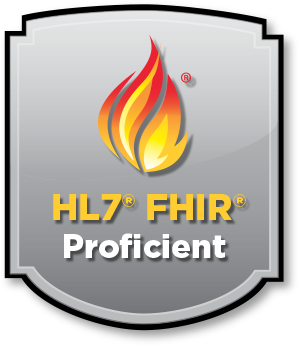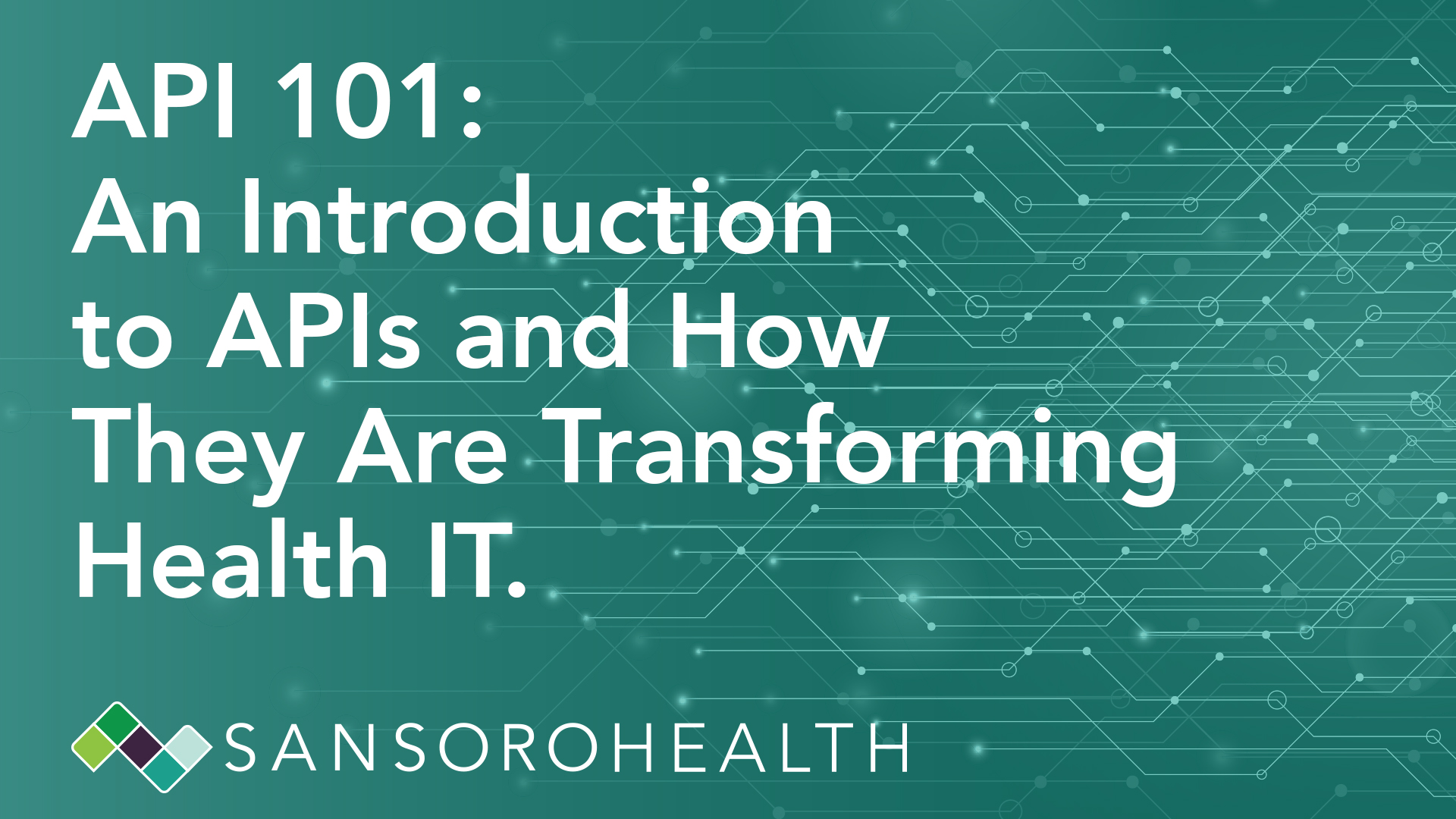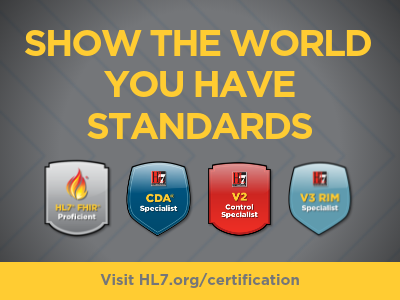HL7 International offers a wide range of certification options for its products. The purpose of these certifications is to ensure the quality of the workforce implementing HL7's standards.
Going to FHIR DevDays and Want to be a Certified FHIR Rockstar? The FHIR Proficiency Exam Prep Course Can Help!
[fa icon="calendar'] Jun 5, 2019 3:09:20 PM / by Simone Heckmann posted in FHIR, HL7 education, HL7, certification, health IT, DevDays
API 101 – The Webinar
[fa icon="calendar'] May 14, 2019 4:04:53 PM / by Wayne Kubick posted in FHIR, HL7, health IT, news, API, SOA
Join Our Webinar on May 22, 2019 at 12 pm Central!
API 101: An Introduction to APIs and How They Are Transforming Health IT
Webinar speakers and blog authors:
Wayne Kubick, HL7 CTO
John Orosco, CTO, Sansoro Health
Dave Levin, CMO, Sansoro Health
Application program interface (API) technology has transformed the digital economy and is now poised to do the same in health IT. The combination of the an increasingly robust HL7 Fast Healthcare Interoperability Resources (FHIR®) standard API and the rules proposed by ONC on interoperability will accelerate this trend. What should you know before diving in? Tune in to our live webinar on Wednesday May 22 at 12pm CT.
APIs allow software applications to connect, communicate and collaborate through a combination of web services. This harnesses the power of internet “backbone” communication protocols to provide a secure channel for connecting two applications and standards like JSON and XML that provide data-interchange formats or “objects.”
APIs also allow businesses to collaborate more seamlessly. For example, businesses that ship packages via UPS can leverage the UPS API to easily track shipping status. This API hides the complexity of the UPS database and business logic. It’s an open API that is exposed to the world so almost anyone can use it. Simply register, learn how the API works and connect and your system can interrogate the UPS API, instantly retrieve the current status, and display it to your customers on your website or app.
How to Get HL7 Certified
[fa icon="calendar'] May 13, 2019 1:51:08 PM / by Sadhana Alangar, PhD posted in FHIR, HL7 education, CDA, HL7, certification, Version 2, Version 3
Did you know HL7 offers certification and proficiency exams for its healthcare information technology standards?
CTO Tooling Update: Neither a Sprint nor a Marathon
[fa icon="calendar'] Apr 29, 2019 3:42:48 PM / by Wayne Kubick posted in FHIR, CDA, HL7, health IT, C-CDA, news, tooling, JIRA, Confluence
Our ongoing tooling journey at HL7 continues, neither as a sprint nor a marathon. For us, it’s really more like an odyssey – an ongoing journey where there is always something more to be done, another path to explore, and a final destination (retirement, for example) seems far out of reach. In the case of HL7 tooling, a fair number of tooling retirements are well overdue.
Despite the wait, it’s gratifying to see when tangible progress is actually achieved. On the Confluence front, we’re in the home stretch of phase 1 of the rollout, though there’s a whole new course to pursue just around the bend. We now have all work groups on Confluence (!) and have also migrated many more projects, committees and collaborations. New functions and help features in Confluence (including a major facelift for confluence.hl7.org) are being added regularly, and you can keep up with these by checking the CTO Tooling Update page. This enabling platform is already unleashing many new opportunities within the HL7 community. Our next target is to work toward optimizing our processes with online forms and workflow. The online project scope statement (PSS) pilot is now available and will give us an opportunity to speed up reviews and approvals as well as make new projects more visible to the community in the hope we can avoid last minute catchups.
HL7 Receives Letter of Support from CMS
[fa icon="calendar'] Feb 11, 2019 8:54:30 AM / by Charles Jaffe, MD, PhD posted in FHIR, interoperability, CMS
We are delighted to announce that HL7 has received a letter of support applauding our work in standards development from the Centers for Medicare & Medicaid Services (CMS) Administrator Seema Verma.
Based on the impact that HL7 has made on improving interoperability and current adoption of the HL7® FHIR® standard, CMS has shared their priorities for collaboration in the coming year.
HL7 will be developing a strategy over the next several weeks, with input from CMS, to meet each of these priorities. I will share more information about this in the near future. In the meantime, I'd like to thank you for your contributions to the work of this organization and ask you to join me as we focus our efforts on meeting these needs.
To view the letter in its entirety, please click here.
Sincerely,
HL7 International CEO
Charles Jaffe, MD, PhD
What's Next for Blue Button 2.0 and HL7 FHIR?
[fa icon="calendar'] Feb 4, 2019 2:08:58 PM / by Mark Scrimshire posted in FHIR, blue button
.png?width=600&name=Untitled%20design%20(1).png)
Nine years ago, Blue Button started as an idea:
HL7 Publishes FHIR® Release 4
[fa icon="calendar'] Jan 2, 2019 12:53:55 PM / by Andrea Ribick posted in FHIR, interoperability
As the global authority for interoperability in health care information technology with affiliates in 35 countries, we're excited to announce the publication of Release 4 of the HL7 Fast Healthcare Interoperability Resources (FHIR®) standard. This new version is the culmination of 18 months of extensive work to finalize the base parts of the specification and incorporates changes and enhancement requests received from implementation partners around the world.
"HL7 FHIR R4 is a beginning," said HL7 CEO Dr. Charles Jaffe. "It is the legacy of eight years of innovation and collaboration among a community of thousands around the world. It is a commitment from HL7 to create a platform from which Interoperability can someday emerge. It is a promise to provide reusable data across the continuum of biomedical research, patient care, and population health."
CTO Tooling Update: In Medias Res
[fa icon="calendar'] Dec 17, 2018 2:26:12 PM / by Wayne Kubick posted in FHIR, HL7, health IT, news, tooling, JIRA, Confluence
Every good story has a beginning, middle and end. First, we get hooked on the opening, which drives us ultimately towards a conclusion, but the real time and effort comes along the way. While the middle is where most things happen, we can sometimes feel like we’re in a holding pattern there – until something tangible finally happens that directly affects what we do.
This rings true with HL7’s transition to our new collaboration tooling environment built on Confluence and JIRA. The good thing is that we’re making steady progress on multiple fronts, with many more work groups in Confluence and the killer apps of JIRA Ballot and Unified Terminology Governance (UTG) becoming more palpable. On the other hand, we’re clearly still en route, perhaps able to imagine but not yet actually taste the promised rewards. This is understandable, since the mission of HL7 is the creation of standards, not the creation of tooling to help us achieve that. However, it’s tooling that directly affects us in the ways we develop HL7 standards.
Another Type of Moonshot: Project Gemini
[fa icon="calendar'] Sep 25, 2018 1:53:32 PM / by Wayne Kubick posted in FHIR, HL7, interoperability, IHE, Gemini, Sync4science, International Patient Summary
Achieving healthcare interoperability at any level, by definition, requires at least two parties working together. Achieving it on a global scale requires a shared dedication of the many to the common good. Consider the vision statements of two organizations:
- HL7 International: “A world in which everyone can securely access and use the right health data when and where they need it.”
- IHE International: “Enable seamless and secure access to health information that is usable whenever and wherever needed.”
FHIR in the Fall
[fa icon="calendar'] Sep 24, 2018 2:20:25 PM / by Virginia Lorenzi posted in FHIR, HL7 education, HL7, SMART on FHIR
HL7 is gearing up for a fall season that is chock full of flexible and convenient FHIR training opportunities for busy people like working professionals and students.









.png)
